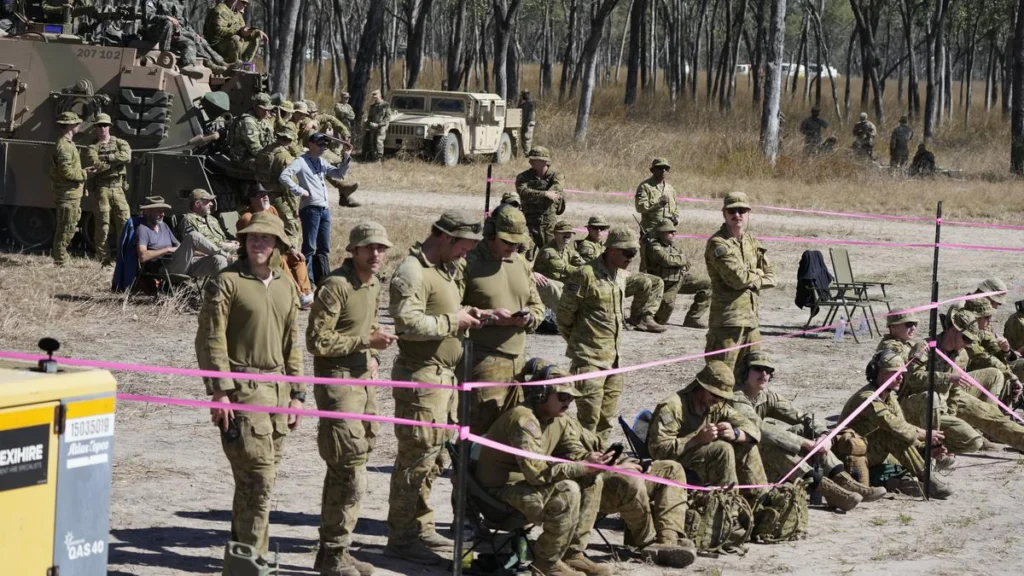A military exercise drawing together 19 nations and 35,000 forces begins in Australia

Talisman Sabre, a major multinational military exercise, has begun in Australia. Nineteen nations and 35,000 troops are participating. The exercise, which started in 2005, aims to improve cooperation between military forces. It has grown to be one of the largest joint drills in the Asia-Pacific region. Originally a biennial exercise between the United States and Australia, Talisman Sabre now includes several additional nations.
The goal of the exercise is to enhance coordination and readiness. Participants will engage in amphibious operations, air assaults, and humanitarian missions. By training together, the forces can improve their ability to respond to regional crises. These could include both military and humanitarian situations. The exercise prepares nations to handle a wide range of emergencies.
The Origins of Talisman Sabre
Talisman Sabre began as a collaboration between the United States and Australia. The first exercise took place in 2005, and it aimed to strengthen their military relationship. Over time, the exercise expanded, bringing in other nations interested in regional security. Today, it includes countries such as Japan, Canada, and the United Kingdom.
The U.S. and Australia have long been key allies. Talisman Sabre reflects their strong military partnership. As tensions in the Indo-Pacific region have risen, the importance of such exercises has only grown. These drills provide a platform for nations to test their readiness and develop stronger military ties.
The Scope of the Exercise
Talisman Sabre involves a variety of combat and peacekeeping scenarios. Participants engage in everything from amphibious landings to disaster relief. The exercise is designed to simulate real-world operations. It covers both military combat and non-combat situations. For example, previous exercises have included disaster response to earthquakes and tsunamis.
The exercise also focuses on humanitarian operations. It trains military forces to provide aid and maintain stability in regions facing natural disasters. This ability to work together in such scenarios is vital for ensuring regional security. The exercise’s complexity allows each nation to improve its combat and humanitarian skills.
Multinational Cooperation
One of the most significant aspects of Talisman Sabre is the cooperation between multiple countries. Besides the U.S. and Australia, countries like Japan, South Korea, and New Zealand regularly participate. This multinational cooperation enhances the region’s security. The exercise fosters strong military ties between nations with diverse capabilities. It also helps create a shared understanding of how to work together during crises.
The Indo-Pacific is a region of strategic importance. Tensions over territorial disputes and military presence are high. Talisman Sabre allows nations to strengthen their collective defense efforts. It also demonstrates a commitment to regional stability. By participating, countries send a clear message that they are ready to defend peace in the region.
Improving Readiness and Interoperability
The primary goal of Talisman Sabre is to improve military readiness and interoperability. Forces from different nations must work together seamlessly. In modern conflicts, the ability to coordinate across multiple branches of the military is crucial. The exercise provides an opportunity to practice joint operations in real-world settings.
Talisman Sabre helps participants fine-tune their communication and coordination. It also enables them to refine their capabilities. Whether it’s cyber defense, amphibious assault, or air superiority, the exercise allows nations to evaluate and improve their strengths. For example, participants can test their ability to conduct joint air operations or handle complex logistics.
This focus on interoperability ensures that participating nations can respond quickly and effectively to threats. Whether facing natural disasters or regional instability, nations need to be ready to act together.
Strategic Implications for the Indo-Pacific Region
The Indo-Pacific is home to some of the world’s most pressing security concerns. Territorial disputes, particularly in the South China Sea, are ongoing. North Korea’s missile tests also pose a serious threat. China’s growing military presence in the region adds to the complexity of the security landscape.
Talisman Sabre plays a vital role in addressing these challenges. It allows nations to showcase their collective resolve and readiness. By participating, countries like the U.S., Australia, and Japan send a strong message to any potential adversaries. The exercise also highlights the importance of cooperation between nations with shared security interests.
As tensions continue to rise in the Indo-Pacific, exercises like Talisman Sabre become even more crucial. They ensure that nations are prepared for any potential conflict or crisis. By improving their ability to respond to threats, Talisman Sabre helps maintain peace and stability in the region.
Conclusion
Talisman Sabre is a critical exercise for ensuring regional security in the Indo-Pacific. With 19 nations and 35,000 troops participating, the exercise showcases the power of multinational cooperation. It improves military readiness, interoperability, and the ability to respond to both combat and humanitarian challenges. As the region faces increasing security threats, the importance of exercises like Talisman Sabre cannot be overstated. These drills not only strengthen military partnerships but also provide a platform for nations to work together in addressing shared challenges. As Talisman Sabre continues to grow, it will remain a key component of regional defense and stability in the Indo-Pacific.






